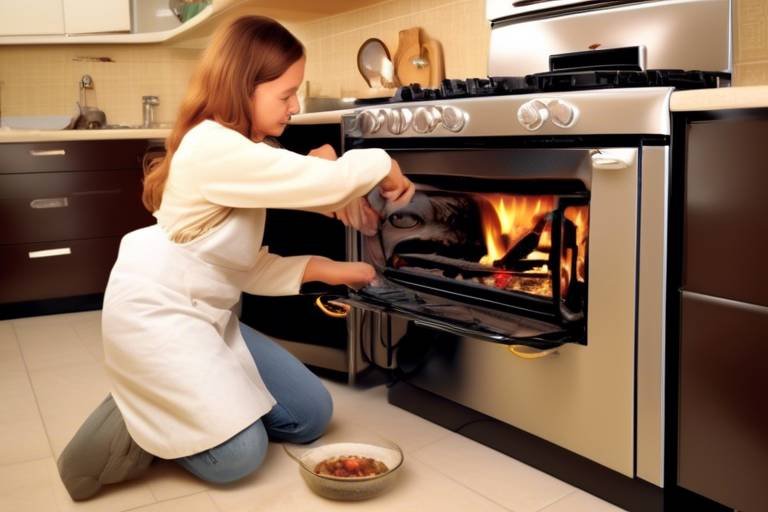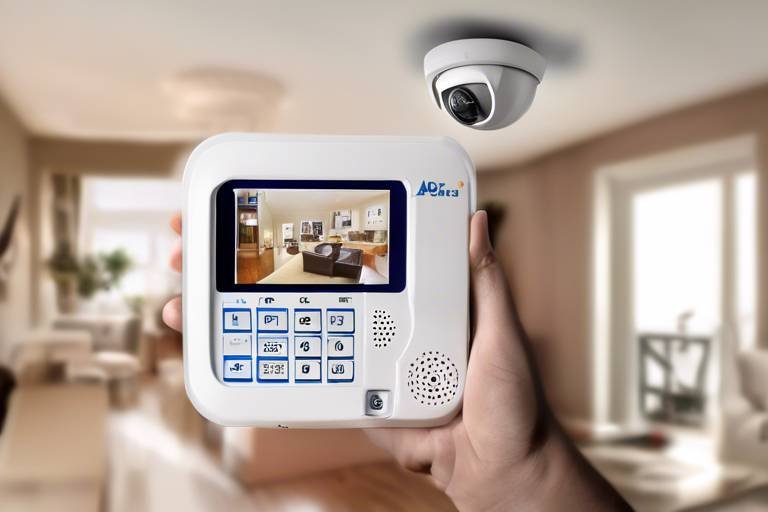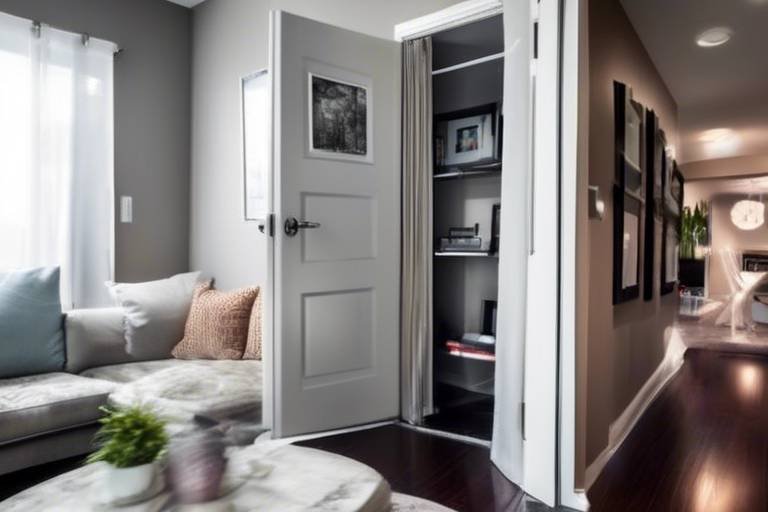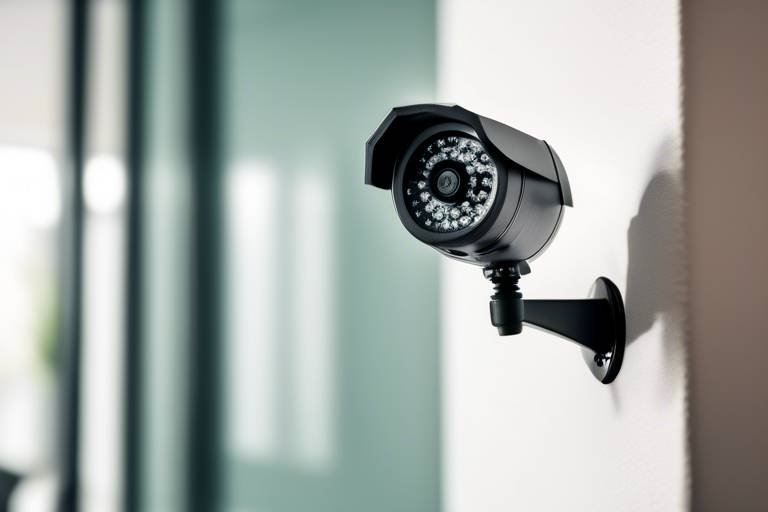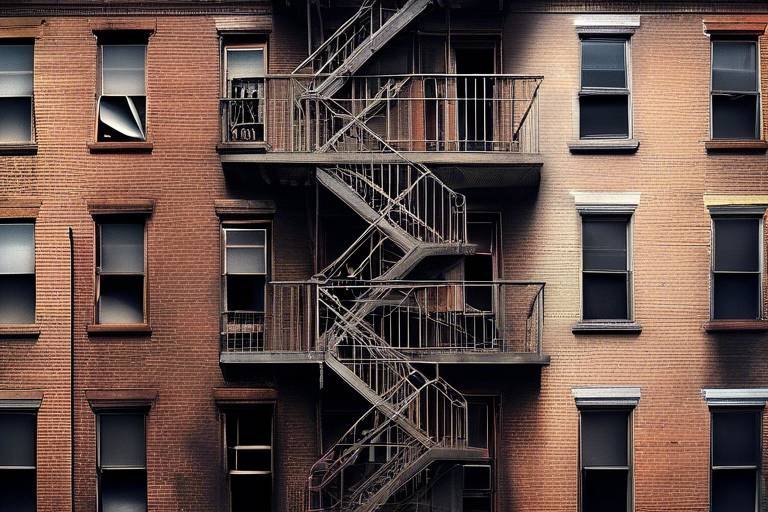Safety Precautions for Using Gas Stoves at Home
Using a gas stove can be a delightful experience, transforming cooking into an art form with its precise heat control and instant flame. However, with great power comes great responsibility. It's crucial to understand and implement essential safety precautions to ensure that your culinary adventures don't turn into hazardous situations. This article discusses the fundamental safety measures you should take to create a secure cooking environment in your home.
Before diving into the specifics, it's important to grasp the basic principles of gas stove safety. First and foremost, proper installation is key. An incorrectly installed stove can lead to gas leaks, which can be both dangerous and costly. Additionally, regular maintenance is vital; a well-maintained stove not only operates efficiently but also minimizes the risk of accidents. Always remember, safety is not just a precaution—it's a priority that should be at the forefront of your cooking experience.
When it comes to gas stoves, the installation process is as critical as the cooking itself. Proper installation can significantly reduce the risk of gas leaks and other hazards. Before you even think about cooking, ensure that your stove is installed correctly. This involves following specific guidelines and regulations to create a safe cooking space.
The placement of your gas stove is crucial for both safety and convenience. Ideally, your stove should be located in a well-ventilated area, away from any flammable materials. Think of your kitchen as a stage, and your gas stove is the star performer; it deserves a spot where it can shine without any distractions or dangers. Consider accessibility as well—your stove should be easy to reach but not in a position where it can be accidentally bumped or knocked over.
While it might be tempting to tackle the installation yourself, hiring certified professionals is a wise choice. These experts not only ensure that your stove meets all safety standards but also provide peace of mind knowing that everything is set up correctly. Think of it this way: would you trust an amateur to perform surgery? The same logic applies to gas stove installation. Always opt for professionals who can guarantee safe and compliant installation.
Once your gas stove is installed, the next step is regular maintenance and inspections. Just like a car needs oil changes and tune-ups, your gas stove requires periodic checks to ensure it's operating safely and efficiently. Regular maintenance can help detect potential issues early, preventing accidents before they happen.
Keeping your burner and grates clean is essential for optimal performance. Over time, grease and food particles can accumulate, leading to dangerous malfunctions. Here are some tips for maintaining cleanliness:
- Turn off the stove and allow it to cool before cleaning.
- Use a damp cloth and non-abrasive cleaner to wipe down the surfaces.
- Ensure that all parts are completely dry before reassembling.
Regularly checking for gas leaks is a critical safety measure. Signs of a gas leak include a distinctive smell (often compared to rotten eggs) and hissing sounds near the stove. If you suspect a leak, take immediate action:
- Turn off the gas supply.
- Ventilate the area by opening windows and doors.
- Evacuate everyone from the premises.
- Contact a professional to assess the situation.
Now that your gas stove is properly installed and maintained, it's time to focus on safe cooking practices. Cooking with gas can be a breeze, but it requires attention and care to avoid accidents. Always monitor your flames and ensure that flammable materials are kept at a safe distance. Think of your stove as a fire-breathing dragon; it can create warmth and comfort, but if left unchecked, it can also wreak havoc.
Using appropriate cookware is essential for safe and effective cooking on gas stoves. Avoid using lightweight materials that can warp or melt. Instead, opt for heavy-duty pots and pans that can withstand high temperatures. This not only enhances your cooking experience but also keeps safety at the forefront.
Controlling flames and heat levels is another critical aspect of cooking safely with gas stoves. Always adjust your flame to match the size of your cookware. A flame that is too high can lead to overheating and potential fires. Think of it like managing a campfire; you want just enough heat to cook your food without letting it get out of control.
Even with all precautions taken, it's wise to be prepared for emergencies. Developing an emergency plan can make all the difference in a gas-related incident. Consider this plan as your safety net; it’s there to catch you if things go awry.
Your emergency plan should include clear actions to take in the event of a gas leak or fire. Make sure everyone in your household is familiar with the plan, and practice it regularly. This includes knowing how to turn off the gas supply and having a designated meeting point outside your home.
Finally, it's important to recognize situations that warrant immediate professional assistance. If you ever feel unsure or unsafe, don't hesitate to call for help. Your safety is paramount, and professionals are trained to handle these situations effectively.
Q: How do I know if my gas stove is leaking?
A: Look for signs like a rotten egg smell, hissing sounds, or dead houseplants near the stove. If you suspect a leak, evacuate immediately and call a professional.
Q: Can I use any cookware on a gas stove?
A: No, it's important to use heavy-duty cookware designed for high heat to prevent warping and ensure effective cooking.
Q: How often should I have my gas stove inspected?
A: It's recommended to have your gas stove inspected at least once a year to ensure safe and efficient operation.

Understanding Gas Stove Safety
When it comes to cooking at home, gas stoves are a popular choice for many households. They offer quick heating, precise temperature control, and a level of convenience that electric stoves often lack. However, with these benefits comes a responsibility to ensure that safety is prioritized. Understanding gas stove safety is crucial for preventing accidents and ensuring a secure cooking environment. This involves not only being aware of how to operate the stove correctly but also recognizing the importance of proper installation and maintenance.
One of the fundamental principles of gas stove safety is the need for proper installation. A gas stove should always be installed by a qualified professional who understands the nuances of gas connections and local regulations. This is not just a matter of convenience; improper installation can lead to gas leaks, which are not only hazardous but can also lead to catastrophic accidents. Always ensure that your gas stove is installed in a well-ventilated area to allow any potential gas to dissipate safely into the atmosphere.
Moreover, regular maintenance is another critical aspect of gas stove safety. Just like a car needs regular oil changes and check-ups, your gas stove requires routine inspections to ensure it operates efficiently and safely. This includes checking the burners for any signs of wear and tear, ensuring that the gas lines are intact, and looking out for any unusual odors that could indicate a gas leak. Being proactive about maintenance can save you from dangerous situations down the line.
In addition to installation and maintenance, understanding the signs of gas leaks is essential. Gas leaks can be subtle, and many people may not realize there's a problem until it becomes serious. Some common signs include:
- A distinct smell similar to rotten eggs, which is added to natural gas for safety.
- Dead or dying vegetation around the gas line.
- Unexplained hissing or whistling noises near the gas line.
If you suspect a gas leak, it’s vital to act quickly. Turn off the gas supply, evacuate the area, and contact a professional immediately. Remember, safety should always come first!
In summary, understanding gas stove safety involves a combination of proper installation, regular maintenance, and being vigilant about potential hazards. By taking these steps, you can create a safer cooking environment for you and your loved ones. So, the next time you fire up that gas stove, remember that safety is not just an option—it's a necessity!

Proper Installation Techniques
When it comes to ensuring the safety and efficiency of your gas stove, are absolutely crucial. Think of it like building a solid foundation for a house; if the base isn’t right, everything else is at risk. The first step in this process is to ensure that your gas stove is installed by a qualified professional. This is not just a suggestion—it's a necessity. A certified technician will have the expertise to connect the gas lines safely, check for leaks, and ensure that everything is functioning properly. Besides, it’s always better to be safe than sorry, right?
Another important aspect of installation is the location of your gas stove. You want to choose a spot that allows for adequate ventilation. This means keeping it away from any obstructions like cabinets or curtains that could catch fire. Ideally, your stove should be placed near a window or an exhaust fan to help dissipate any gas that may accidentally escape. Additionally, consider the layout of your kitchen. You want to ensure that the stove is easily accessible for cooking but also positioned in a way that minimizes the risk of accidental burns or spills.
Now, let’s talk about the gas line connections. It’s vital that these connections are secure and leak-free. A loose connection can lead to dangerous gas leaks, which can pose serious health risks to you and your family. During installation, a qualified technician will use a pipe wrench to tighten the connections and may even apply a thread sealant to prevent any leaks. After the installation, it’s a good idea to perform a simple leak test using soapy water. If you see bubbles forming, you’ve got a leak that needs immediate attention!
Furthermore, if your gas stove comes with a flexible gas line, make sure it is the right length. A line that is too short can create tension on the connections, while a line that is too long might lead to unnecessary bends and twists, which can also be hazardous. Always follow the manufacturer’s recommendations regarding the type and length of the gas line.
Lastly, don’t forget about the importance of following local building codes and regulations. These codes are in place for a reason: to ensure your safety. If you’re unsure about any aspect of the installation, consult with your local building authority or a professional installer. They can provide guidance on what is required in your area.
In summary, proper installation techniques for your gas stove are essential for preventing accidents and ensuring a safe cooking environment. Always opt for professional installation, choose the right location, secure gas line connections, and adhere to local regulations. Your safety in the kitchen should always come first!
- What should I do if I suspect a gas leak? If you smell gas, immediately turn off the gas supply, evacuate the area, and call your gas company or emergency services.
- How often should I have my gas stove inspected? It’s recommended to have your gas stove inspected annually to ensure it’s functioning safely and efficiently.
- Can I install a gas stove myself? While it may be tempting to save money, it’s best to hire a certified professional to install your gas stove to avoid any potential hazards.
- What are the signs of a gas leak? Common signs include a sulfur-like smell, hissing sounds near the gas line, or dead vegetation around the gas line.

Choosing the Right Location
When it comes to using gas stoves, the location you choose can make a world of difference in terms of safety and functionality. Think of it as setting the stage for a performance; if the stage isn't right, the show won't go on smoothly. First and foremost, you want to ensure that your gas stove is placed in a well-ventilated area. This is crucial because proper ventilation helps disperse any gas that might accidentally leak, reducing the risk of dangerous situations.
Additionally, consider the proximity to flammable materials. It’s like having a firework display in your backyard; you wouldn’t want anything nearby that could catch fire. Keep your stove away from curtains, paper towels, and other combustible items. A safe distance is typically at least three feet away from such materials. This simple precaution can prevent a minor cooking mishap from escalating into a major disaster.
Accessibility is another key aspect when choosing the right location for your gas stove. You want to ensure that it’s easy to reach, not just for cooking but also for any necessary maintenance or emergency situations. Imagine trying to reach your stove while juggling a hot pan; it’s not just inconvenient, it can be downright dangerous. Therefore, position your stove in a way that allows for easy access from multiple angles.
Moreover, think about the layout of your kitchen. A well-designed kitchen not only enhances your cooking experience but also promotes safety. For instance, having the stove near the sink can facilitate easy cleanup, but it’s important to ensure that water doesn’t splash onto the stove while cooking. This can create slippery surfaces and increase the risk of accidents.
Lastly, if you live in an area prone to earthquakes or other natural disasters, consider securing your gas stove to the wall. This is an often-overlooked safety measure that can prevent the stove from tipping over during a shake, which could lead to gas leaks and fires. In summary, choosing the right location for your gas stove is not just about convenience; it’s about creating a safe and efficient cooking environment. So take the time to analyze your space, and make informed decisions that prioritize safety.
- What should I do if I smell gas near my stove? If you detect a gas smell, immediately turn off the stove, open windows for ventilation, and evacuate the area. Do not use any electrical devices, and call your gas company or emergency services.
- How often should I have my gas stove inspected? It is recommended to have your gas stove inspected at least once a year to ensure it is functioning safely and efficiently.
- Can I use any cookware on a gas stove? No, it’s essential to use cookware that is compatible with gas stoves, such as those with a flat bottom for even heating.
- What is the best way to clean my gas stove? Regularly wipe down the stovetop with a damp cloth and use a soft brush to clean the burners, ensuring no food residue is left that could cause blockages.

Professional Installation Services
When it comes to installing a gas stove, opting for is not just a luxury; it’s a necessity. Many homeowners underestimate the complexity involved in setting up a gas appliance, thinking they can handle it themselves. However, this can lead to serious safety risks, including gas leaks and fires. Hiring certified professionals ensures that your stove is installed according to the highest safety standards, providing you with peace of mind every time you cook.
Certified technicians are trained to follow specific guidelines and regulations that govern gas appliance installations. They possess the knowledge to assess your home’s layout, ensuring that the stove is placed in a location that promotes adequate ventilation and minimizes the risk of accidents. Additionally, they can identify potential hazards in your home that you might overlook, such as improper gas line connections or inadequate clearance from flammable materials.
Moreover, professional installation services often include a thorough inspection of your gas supply system. This means they’ll check for any existing issues that could compromise safety, such as:
- Corroded or damaged gas lines
- Improperly sized gas regulators
- Ventilation issues
By addressing these concerns before they escalate, you not only enhance your safety but also prolong the lifespan of your gas stove. Think of it like getting a health check-up; it’s better to catch potential problems early rather than waiting for something to go wrong.
In addition to safety, professional installation can also improve the efficiency of your gas stove. A well-installed stove will perform better, providing you with consistent heat and reducing cooking times. This efficiency translates into savings on your energy bills, making the initial investment in professional installation worth every penny.
Lastly, many professional installation services offer warranties or guarantees on their work. This means that if any issues arise due to improper installation, you have a safety net to fall back on. In contrast, if you attempt a DIY installation and something goes wrong, you might be left to deal with the consequences alone, which can be both costly and dangerous.
In summary, choosing professional installation services for your gas stove is a smart move that prioritizes safety, efficiency, and peace of mind. It’s an investment in your home and your well-being, ensuring that your cooking experience is as enjoyable and worry-free as possible.

Regular Maintenance and Inspections
When it comes to ensuring the safety and efficiency of your gas stove, are absolutely crucial. Just like you wouldn't drive a car without checking the oil or tire pressure, your gas stove deserves the same level of attention. Neglecting routine checks can lead to dangerous malfunctions, gas leaks, or inefficient cooking, which can turn your culinary adventures into a hazardous experience. So, let’s dive into why these practices are essential and how you can implement them effectively.
First and foremost, conducting regular maintenance helps you identify potential issues before they escalate into serious problems. For instance, checking the burner and grates for any buildup of grease or food particles can prevent blockages that might affect the flame. A clean burner not only improves cooking efficiency but also reduces the risk of flare-ups. Additionally, keeping an eye on the gas line and connections can help you spot any wear or damage that might lead to gas leaks.
To ensure you’re on the right track, consider setting a maintenance schedule. This could be as simple as a monthly check-up where you inspect the following:
- Burner cleanliness
- Gas line connections
- Control knobs and their functionality
- Ventilation systems for proper airflow
Moreover, it’s essential to perform a thorough inspection of your gas stove at least once a year. This is where you might want to bring in the professionals. Certified technicians can check for gas leaks using specialized equipment, ensuring that everything is functioning as it should. They can also provide insights into any potential upgrades or repairs that might be necessary to keep your stove running safely and efficiently.
In addition to these inspections, you should also be vigilant about cleaning the burner and grates. A buildup of food and grease can not only affect performance but also pose a fire hazard. Here’s a simple cleaning routine you can follow:
- Turn off the stove and allow it to cool completely.
- Remove the grates and burner caps.
- Soak them in warm, soapy water for about 15 minutes.
- Scrub with a non-abrasive sponge, rinse, and dry thoroughly before reassembling.
Finally, checking for gas leaks is a non-negotiable part of maintaining your gas stove. You can easily do this by applying a mixture of soap and water to the gas line and connections. If you see bubbles forming, that’s a clear sign of a leak. In such cases, it’s imperative to turn off the gas supply immediately and contact a professional. Remember, safety first!
In conclusion, regular maintenance and inspections of your gas stove are not just good practices; they are essential for ensuring a safe cooking environment. By keeping your stove clean, checking for leaks, and scheduling professional inspections, you can enjoy cooking with peace of mind, knowing that you’re taking the right steps to prevent accidents.
Q: How often should I clean my gas stove?
A: It's recommended to clean your gas stove at least once a month to prevent buildup and ensure efficient operation.
Q: What should I do if I smell gas?
A: If you smell gas, immediately turn off the gas supply, ventilate the area, and contact a professional. Do not use any electrical appliances or lights.
Q: Can I install a gas stove myself?
A: While some may attempt DIY installation, it’s best to hire a certified professional to ensure safety and compliance with regulations.

Cleaning the Burner and Grates
Keeping your gas stove's burner and grates clean is not just about aesthetics; it's a crucial part of maintaining a safe and efficient cooking environment. Over time, food particles, grease, and other residues can accumulate on these surfaces, leading to potential hazards such as uneven heating or even gas leaks. Imagine trying to cook your favorite meal only to find that your burner isn't functioning properly because it’s clogged with grime! To prevent this from happening, it's essential to incorporate regular cleaning into your kitchen routine.
Start by ensuring that your gas stove is completely cool and turned off before you begin cleaning. Safety first! Once you're ready, gather your cleaning supplies. You'll need:
- Warm soapy water
- A sponge or soft cloth
- A non-abrasive scrubber
- A toothbrush or small brush for hard-to-reach areas
- White vinegar or a commercial cleaner designed for gas stoves
Begin by removing the grates and burner caps. Soak them in warm soapy water for a few minutes to loosen any stubborn debris. While they soak, take a damp cloth and wipe down the burner base. It’s important to avoid getting any water into the gas ports, so be gentle and thorough. For those tricky spots, a toothbrush can work wonders, helping to dislodge any gunk without damaging the burner itself.
After soaking, scrub the grates and burner caps with your non-abrasive scrubber. Rinse them thoroughly under warm water to remove any soap residue, and then dry them completely with a clean towel. This step is crucial because moisture can lead to rust and other issues. Once everything is dry, reassemble your stove by placing the burner caps and grates back in their designated spots.
To maintain the cleanliness of your gas stove, it’s beneficial to establish a regular cleaning schedule. A quick wipe down after each use can prevent buildup and make deeper cleaning sessions much easier. Think of it as a quick tune-up for your cooking space—just like you wouldn’t let your car go without regular oil changes, your stove deserves the same care!
In conclusion, keeping your gas stove burner and grates clean is a simple yet effective way to enhance your cooking experience while ensuring safety. By dedicating a little time and effort to this task, you can avoid potential hazards and enjoy cooking with peace of mind.
Q: How often should I clean my gas stove burners and grates?
A: Ideally, you should clean your gas stove burners and grates after every use to prevent buildup. However, a thorough cleaning every few weeks is a good practice to maintain efficiency.
Q: Can I use abrasive cleaners on my gas stove?
A: No, it's best to avoid abrasive cleaners as they can scratch and damage the surface of your stove. Stick to non-abrasive scrubbers and gentle cleaning solutions.
Q: What should I do if I smell gas while cleaning?
A: If you smell gas, stop what you're doing immediately, turn off the gas supply, and ventilate the area. Do not use any electrical appliances or ignite flames. Contact a professional for assistance.

Checking for Gas Leaks
Ensuring the safety of your home while using a gas stove is paramount, and one of the most critical aspects of this is regularly checking for gas leaks. Gas leaks can lead to dangerous situations, including fires and explosions, so it's essential to be proactive. But how do you know if there’s a leak? First, pay attention to your senses. A strong smell of gas, often described as similar to rotten eggs, is a clear indicator that something is wrong. If you detect this odor, it’s crucial to act immediately.
Aside from the smell, there are other signs to watch for. Bubbles forming in a soapy water solution applied to gas connections can indicate a leak. If you notice any hissing sounds near your gas appliances, that’s another red flag. Regular inspections can help you catch potential leaks early. Aim to check your gas lines, connections, and appliances at least once a year.
To conduct a simple gas leak check, follow these steps:
- Turn off all gas appliances and valves.
- Mix a solution of soap and water in a spray bottle.
- Spray this solution on gas connections and joints.
- Look for bubbles forming; this indicates a leak.
If you suspect a leak, do not ignore it! Evacuate the area immediately and avoid using any electronic devices, as even a spark could ignite gas. Once you’re at a safe distance, contact your local gas company or emergency services. Remember, safety comes first, and it’s always better to be safe than sorry.
In addition to these checks, consider scheduling a professional inspection at least once a year. Certified technicians can identify issues that may not be apparent to the untrained eye, ensuring your home remains a safe haven free from gas hazards.
If you smell gas, evacuate the area immediately, avoid using any electrical devices, and call your gas company or emergency services from a safe distance.
Regular maintenance, proper installation, and using certified professionals for repairs can help prevent gas leaks. Always keep an eye out for signs of wear and tear on gas lines and appliances.
While gas leaks can happen, they are not extremely common if appliances are properly installed and maintained. Regular checks can significantly reduce the risk.

Safe Cooking Practices
When it comes to cooking with gas stoves, practicing safety is not just a good idea; it's absolutely essential. Think of your gas stove as a powerful tool that, while incredibly useful, can also be dangerous if not handled properly. Just like you wouldn’t drive a car without buckling your seatbelt, you shouldn’t cook on a gas stove without following some basic safety guidelines. So, let’s dive into some of the best practices that can help keep your kitchen safe and your cooking experience enjoyable.
First and foremost, it’s crucial to monitor the flames. The flames on a gas stove should be blue, which indicates that the gas is burning efficiently. A yellow or orange flame can be a sign of incomplete combustion, which not only reduces the efficiency of your stove but can also produce harmful gases like carbon monoxide. If you notice any discoloration in the flames, it’s time to call in a professional to inspect the stove. Remember, a little vigilance can go a long way in preventing potential hazards!
Another important aspect of safe cooking is to avoid placing flammable materials near the stove. Imagine cooking a delicious stir-fry while your dish towel is hanging just a few inches away from the flames. It only takes a second for a small spark to ignite a fire. To minimize this risk, keep things like paper towels, dishcloths, and any other flammable items at a safe distance from your cooking area. A clutter-free and well-organized kitchen not only makes cooking easier but also significantly enhances safety.
Using the right cookware is also vital for safe cooking practices. Not all pots and pans are created equal, especially when it comes to gas stoves. For instance, using flat-bottomed cookware is recommended as it allows for better heat distribution and stability. Additionally, be mindful of the materials; some cookware can warp or even melt if exposed to high heat. Here’s a quick rundown of suitable cookware materials for gas stoves:
| Cookware Material | Safety Level | Notes |
|---|---|---|
| Stainless Steel | High | Durable and non-reactive. |
| Cast Iron | High | Excellent heat retention, but heavy. |
| Non-stick | Medium | Ensure it’s PFOA-free and not overheated. |
| Glass | Medium | Can shatter under extreme heat. |
Managing the flames and heat levels is another essential part of safe cooking practices. It’s easy to get caught up in the excitement of cooking and turn the heat up too high, but this can lead to overheating and even fires. Always start with a lower flame and gradually increase it as needed. Think of it like a dance; you want to maintain control and rhythm rather than letting it get out of hand. Additionally, always use the appropriate burner size for your cookware to ensure even heating and prevent accidents.
In conclusion, safe cooking practices are all about being aware and proactive. By monitoring flames, keeping flammable materials at bay, using the right cookware, and managing heat levels, you can create a safe and enjoyable cooking environment. Remember, a little caution can prevent a lot of trouble in the kitchen!
- What should I do if I smell gas? If you detect a gas smell, immediately turn off the stove, open windows for ventilation, and leave the premises. Call your gas company or emergency services.
- How often should I have my gas stove inspected? It’s recommended to have your gas stove inspected at least once a year to ensure it’s functioning safely and efficiently.
- Can I use aluminum foil on a gas stove? While it can be used, be cautious as it can block airflow and cause overheating. Always consult your stove’s manual.

Using the Right Cookware
When it comes to cooking on a gas stove, choosing the right cookware is as crucial as selecting the freshest ingredients. Just imagine trying to bake a cake in a frying pan — it simply won't work! The right cookware not only enhances your cooking experience but also ensures safety and efficiency in the kitchen. So, what should you consider when selecting pots and pans for your gas stove?
First and foremost, material matters. Gas stoves provide direct heat, which means that the material of your cookware can significantly impact cooking performance. For instance, stainless steel is a popular choice because it heats evenly and is durable, while cast iron retains heat exceptionally well, making it ideal for slow cooking. On the other hand, non-stick pans can be convenient for easy cleanup, but they may not withstand high temperatures as well as other materials. Therefore, you should assess what type of cooking you do most often and choose materials that complement your style.
Another essential factor is the size and shape of your cookware. Your pots and pans should fit comfortably over the burners without hanging off the edges. If a pan is too small, it may not heat evenly, and if it's too large, it can block the flame, reducing efficiency and potentially causing overheating. Additionally, consider the shape of the cookware; flat-bottomed pans are generally more stable on the burner, allowing for better heat distribution.
It's also wise to pay attention to the handles and lids. Cookware with heat-resistant handles will prevent you from burning your hands, especially when cooking at high temperatures. Lids that fit snugly can help retain moisture and heat, which is particularly useful when simmering or steaming. Moreover, if you’re using a lid, ensure it’s made from a material that can withstand high heat without warping.
Lastly, consider whether your cookware is suitable for oven use. Some recipes may require you to start cooking on the stove and finish in the oven. Not all cookware can handle this transition, so check the manufacturer's guidelines. Investing in versatile cookware that can be used on both the stove and in the oven can save you from unnecessary hassle.
In summary, using the right cookware on your gas stove is not merely about aesthetics; it's about enhancing safety and cooking efficiency. Choosing materials, sizes, and designs that work well with gas cooking can make a significant difference in your culinary results and overall kitchen experience.
- What materials are best for gas stove cookware? Stainless steel, cast iron, and certain non-stick materials are ideal for gas stoves due to their heat conductivity and durability.
- Can I use glass cookware on a gas stove? Yes, but ensure it is specifically designed for stovetop use to avoid breakage from direct heat.
- Should I avoid any types of cookware? Yes, avoid using aluminum cookware as it can warp and may not distribute heat evenly on a gas stove.
- How do I know if my cookware is gas stove safe? Check the manufacturer's label or specifications; it should indicate whether it is suitable for gas stoves.

Managing Flames and Heat Levels
When it comes to cooking with gas stoves, is crucial not only for achieving the perfect dish but also for ensuring safety in your kitchen. Imagine you’re in the middle of preparing a delicious pasta sauce, and suddenly, the flames leap higher than expected. Panic can set in quickly! By understanding how to control your stove's flames and heat, you can avoid such scenarios and keep your cooking experience enjoyable and safe.
First and foremost, it’s essential to know the difference between simmering, boiling, and frying, as each cooking method requires different flame levels. For instance, a high flame is perfect for quick boiling or searing meats, while a medium flame is ideal for sautéing vegetables. On the other hand, a low flame is best suited for simmering sauces or keeping food warm. By adjusting the knob on your gas stove, you can easily manipulate these flames to suit your cooking needs.
Here are some practical tips for managing flames and heat levels:
- Observe the Flame Color: A blue flame indicates that your gas stove is burning efficiently, while a yellow or orange flame suggests incomplete combustion, which can produce harmful carbon monoxide. If you notice a color change, it might be time to check your stove's burners.
- Use the Right Size Burner: Match your cookware size to the burner size. Using a small pot on a large burner can lead to uneven cooking and wasted energy.
- Keep an Eye on Your Food: Never leave your cooking unattended. Flames can flare up unexpectedly, and it’s essential to monitor your food closely to prevent burning or boiling over.
Additionally, consider the type of cookware you use. Certain materials, such as cast iron or stainless steel, conduct heat differently than non-stick pans. This can affect how quickly your food cooks and how well you can manage the heat. For instance, cast iron retains heat exceptionally well, allowing for a more consistent cooking temperature, while thinner pans may heat up and cool down more rapidly. Choosing the right cookware can make a significant difference in your cooking efficiency and safety.
Finally, always keep flammable materials away from your cooking area. Items like paper towels, dish cloths, and even loose clothing can easily catch fire if they come too close to an open flame. A good rule of thumb is to maintain a three-foot safety zone around your cooking area. This simple practice can significantly reduce the risk of accidents and ensure that your cooking environment remains safe.
In summary, managing flames and heat levels on your gas stove is a skill that can be mastered with practice and awareness. By being attentive to the color of the flames, using the appropriate burner size, selecting the right cookware, and keeping your cooking area free from hazards, you can create a safe and enjoyable cooking experience. So the next time you step into your kitchen, remember: it's not just about cooking; it's about cooking safely!
- What should I do if my gas stove flame is yellow? A yellow flame indicates incomplete combustion. You should check your burners for clogs or consider calling a professional to adjust the air-to-gas ratio.
- How can I prevent cooking fires? Always keep flammable materials away from the stove, monitor your cooking, and use the appropriate cookware.
- Is it safe to leave food unattended on the stove? No, it’s essential to keep an eye on your food to prevent burning and potential fires.

Emergency Preparedness
When it comes to using gas stoves, being prepared for emergencies is not just a good idea; it’s a necessity. Imagine cooking your favorite meal when suddenly, you smell gas or see a flicker of flames that shouldn’t be there. Panic can set in quickly, but with the right emergency preparedness steps, you can respond effectively and safely. Creating an emergency plan is your first line of defense. This plan should outline clear actions to take in the event of a gas leak or fire. Think of it as your safety net—something that keeps you secure when things go awry.
Your emergency plan should include essential details like evacuation routes and safe meeting points outside your home. It's wise to discuss this plan with everyone in your household, so everyone knows what to do when the unexpected happens. For instance, if you have children, practice the plan with them. It’s like a fire drill, but tailored to gas-related emergencies. Knowing where to go and what to do can save precious seconds in a critical situation.
Additionally, make sure to keep a list of emergency contacts handy. This list should include local emergency services, a trusted neighbor, and any family members who can assist in an emergency. Having these numbers at your fingertips can make a world of difference. You can even keep this list on your fridge or in a prominent place for quick access. And don’t forget about the importance of having a working fire extinguisher nearby. It’s like having a superhero in your kitchen, ready to swoop in and save the day!
But how do you know when to call for help? Recognizing the signs of a gas leak or a potential fire is crucial. If you ever notice a hissing sound near your stove, smell rotten eggs (which is the scent added to natural gas), or see a yellow or orange flame instead of a blue one, it's time to take action. Evacuate everyone from the area immediately and call your gas provider or emergency services. Don’t attempt to fix the problem yourself; safety should always come first.
In summary, being prepared for emergencies related to gas stove usage is all about having a plan, knowing the signs of danger, and understanding when to seek help. It’s not just about cooking; it’s about ensuring that your home remains a safe haven for you and your loved ones. Remember, a little preparation can go a long way in keeping everyone safe!
- What should I do if I smell gas? If you smell gas, evacuate the area immediately and call your gas provider or emergency services. Do not turn on any electrical devices.
- How often should I check for gas leaks? It’s recommended to check for gas leaks at least once a month or whenever you notice a change in the smell of gas.
- What type of fire extinguisher should I have for a gas stove? A Class B fire extinguisher is ideal for flammable liquids and gas fires.
- How can I prepare my family for a gas emergency? Discuss your emergency plan with your family, practice evacuation routes, and keep emergency contacts visible.

Creating an Emergency Plan
Having a well-thought-out emergency plan is crucial when it comes to ensuring the safety of your household in the event of a gas-related incident. Think of it as your safety net, ready to catch you if something goes awry. First and foremost, you should identify the potential risks associated with your gas stove. This includes understanding what could happen in the event of a gas leak or fire. Knowing these risks will help you create a plan that addresses them effectively.
Next, consider the layout of your home. Make sure everyone in your household knows the quickest and safest routes to exit the home in case of an emergency. You might want to create a simple map and post it in a visible area, like on the refrigerator. This way, everyone can familiarize themselves with the escape routes. In addition, designate a safe meeting spot outside your home where everyone can gather after evacuating. This spot should be a safe distance away from the house to avoid any potential hazards.
Communication is key during emergencies. Ensure that all family members know how to contact emergency services. Keep a list of important phone numbers, including local fire departments, gas companies, and emergency contacts, easily accessible. You might even consider having a family meeting to discuss the emergency plan, ensuring that every member understands their role. This could be as simple as assigning someone to call for help while others evacuate.
Lastly, practice makes perfect. Conduct regular drills to ensure everyone knows what to do and where to go in case of an emergency. These practice runs will not only build confidence but also help identify any gaps in your plan that need addressing. Remember, the more prepared you are, the less likely panic will set in during an actual emergency. So, take the time to create and rehearse your emergency plan; it could make all the difference when it matters most.
- What should I do if I smell gas? If you detect a gas odor, immediately turn off the gas supply, avoid using any electrical switches, and evacuate the area. Contact your gas company or emergency services from a safe location.
- How often should I check for gas leaks? It's advisable to check for gas leaks at least once a month. Regular inspections can help ensure your gas stove is safe to use.
- What is the best way to clean my gas stove? Regularly clean the burner and grates with warm soapy water to prevent buildup. Make sure to dry them thoroughly before reassembling.

Knowing When to Call for Help
When it comes to using gas stoves, being aware of the signs that indicate it's time to call for professional help can be a game changer. Just like a car that makes strange noises or a computer that freezes up, your gas stove can also exhibit warning signs that shouldn't be ignored. Recognizing these signs early can prevent potentially dangerous situations and ensure your home remains a safe haven.
First and foremost, if you ever smell gas in your home, it’s crucial to act swiftly. The smell of gas is often described as similar to rotten eggs, and it’s a clear indication that there’s a leak. If you detect this odor, avoid using any electrical appliances, including light switches, as even a small spark could ignite the gas. Instead, ventilate the area immediately by opening windows and doors, and then evacuate the premises. Once you’re safely outside, call your local gas company or emergency services to report the leak.
Another situation that warrants a call for help is if your burner flames are inconsistent. Ideally, the flames should be blue and steady. If you notice yellow or orange flames, it could mean that your stove is not burning gas efficiently, which can lead to dangerous carbon monoxide buildup. In this case, it’s essential to have a technician inspect your stove to ensure it’s functioning correctly.
Additionally, if you experience frequent pilot light outages or if the stove fails to ignite properly, these could be signs of underlying issues. It’s easy to overlook these problems, thinking they are just minor inconveniences, but they can point to more significant safety risks. A professional can diagnose the issue and provide the necessary repairs to keep your cooking environment safe.
Moreover, if you notice any physical damage to your stove, such as cracks in the burners or gas lines, don’t hesitate to call for help. Even minor damages can escalate into serious hazards if not addressed promptly. Remember, it’s better to be safe than sorry, and a quick call could save you from a potentially dangerous situation.
In summary, knowing when to reach out for professional assistance is key to maintaining a safe cooking environment. Always trust your instincts—if something feels off, it probably is. Here’s a quick recap of the signs that should prompt you to call for help:
- Smell of gas in your home
- Inconsistent burner flames (yellow or orange)
- Frequent pilot light outages
- Physical damage to the stove
By being vigilant and aware of these warning signs, you can ensure that your gas stove remains a reliable tool in your kitchen, rather than a source of worry. After all, safety should always come first when cooking at home!
Q1: What should I do if I smell gas?
A1: If you smell gas, evacuate the area immediately, avoid using electrical appliances, ventilate the space, and call your gas company or emergency services from a safe distance.
Q2: How can I tell if my gas stove is functioning properly?
A2: Check for blue flames, consistent ignition, and look for any unusual noises or smells. Regular maintenance and inspections can also help ensure it operates safely.
Q3: Is it safe to use a gas stove if the pilot light goes out frequently?
A3: Frequent pilot light outages can indicate an underlying issue. It’s best to consult a professional to diagnose and fix the problem to prevent safety risks.
Q4: What are the signs of a gas leak?
A4: Signs of a gas leak include a strong odor resembling rotten eggs, hissing sounds near gas lines, and dead vegetation around gas pipes. If you notice any of these, call for help immediately.
Frequently Asked Questions
- What are the essential safety precautions for using a gas stove?
When using a gas stove, always ensure proper ventilation, keep flammable materials away, and regularly check for gas leaks. It’s also important to monitor the flame while cooking and never leave the stove unattended.
- How can I tell if my gas stove is installed correctly?
A correctly installed gas stove should have no gas leaks, be securely connected to the gas supply, and have proper ventilation. If you’re unsure, it’s best to have a certified professional inspect the installation.
- What should I do if I smell gas?
If you smell gas, immediately turn off the stove, evacuate the area, and avoid using electrical switches or open flames. Call your gas provider or emergency services to report the leak.
- How often should I clean my gas stove?
It’s advisable to clean your gas stove regularly, ideally after each use. This includes cleaning the burners and grates to prevent buildup that can lead to dangerous malfunctions.
- What type of cookware is safe to use on a gas stove?
Use cookware that is flat and has a smooth bottom for optimal contact with the burner. Materials like stainless steel, cast iron, and aluminum are generally safe, while glass or ceramic can crack under high heat.
- How can I check for gas leaks?
To check for gas leaks, apply a mixture of soap and water to the gas connections. If you see bubbles forming, there’s a leak. In such cases, turn off the gas supply and contact a professional.
- What should I include in my emergency plan for gas-related incidents?
Your emergency plan should outline escape routes, a meeting point outside your home, and contact information for emergency services. Make sure all family members are familiar with the plan.
- When should I call a professional for help with my gas stove?
Call a professional if you notice persistent gas smells, irregular flame behavior, or if your stove is not functioning properly despite following safety guidelines. It's better to be safe than sorry!

